Paksiw na bangus or stewed milkfish in vinegar is a local favorite specially those on the northern parts of Luzon. Cooking food with vinegar decreases the risk of microorganism contamination. Thus, food with sufficient vinegar are least likely to be suspect in food poisoning. You can also store food longer using vinegar compared to dish without them. It also reduces the fishy odor and improves the flavor of fish dishes.
There is also a technique in buying the milkfish. There are two common varieties of milkfish. The one that live in brackish water and the one that lives in fresh water. The first one, is the preferred variety because it has a tasty meat and has less fishy taste. They are called the “Dagupan” bangus which is darker in color and the scales are shiny silver. The fresh water variety often has a muddy taste or “lasang gilik” and the taste is fishy. The color is light dull gray and has a bigger rounded head.
Memories of Paksiw na Bangus
There’s nothing quite like the comforting aroma of paksiw na bangus simmering on the stove. For me, it always brings back memories of lazy afternoons in Pangasinan, sitting on the bamboo bench of my grandmother’s bahay kubo as the briny scent of milkfish cooking in vinegar wafted through the air. Lola Nida would hum her favorite kundiman song as she expertly layered the ingredients in her clay pot, reminding us of the importance of patience in crafting this simple yet satisfying dish.
Stewed milkfish in vinegar is a quintessential Filipino recipe loved by many, especially in the northern regions of Luzon. It’s not just a dish; it’s a slice of our history and a testament to the resourcefulness of Filipino cooking. The tangy vinegar base preserves the fish, making it a practical choice for many households, especially before refrigeration became widespread. But beyond its practicality, the dish is a beautiful marriage of flavors that transforms the humble bangus into something truly special.
Choosing the Best Milkfish for Paksiw na Bangus
When it comes to paksiw na bangus, the quality of the fish can make or break the dish. My uncle Mario, a fish vendor in Dagupan, always emphasized the importance of choosing bangus from brackish water over those raised in freshwater. According to him, brackish water milkfish, often called “Dagupan bangus,” have a distinct sweetness and tender meat that’s perfect for this recipe. These bangus are darker in color, with shiny silver scales that catch the light—a clear indication of their superior quality.
On the other hand, freshwater milkfish tend to have a “muddy” taste, or what we call “lasang gilik.” This flavor can overpower the dish’s delicate balance. So the next time you’re at the market, look closely at the fish. If it has a dull gray color and a larger, rounded head, you’re likely dealing with a freshwater variety. Take it from Uncle Mario: always go for Dagupan bangus if you want your paksiw to shine.
The Magic of Vinegar in Filipino Cooking
Cooking with vinegar, or “pagpapakuluan sa suka,” is a time-honored Filipino technique that’s as practical as it is flavorful. Vinegar not only extends the shelf life of dishes but also neutralizes fishy odors, allowing the natural sweetness of the milkfish to take center stage. Lola Nida always said that the secret to a perfect paksiw was “letting the vinegar do its magic” before stirring anything in the pot. By letting the mixture boil undisturbed, the vinegar’s acidity mellows, creating a harmonious balance with the other ingredients.
In addition to its culinary benefits, vinegar has long been valued for its antimicrobial properties. In fact, paksiw na bangus is one of the safest fish dishes to prepare, as the high acidity reduces the risk of contamination. It’s a practical choice for busy households and a delicious way to keep food fresh longer.
Layering Flavors: The Heart of Paksiw na Bangus
Every family has its own way of preparing the dish, but my mother’s technique is one I swear by. She starts by lining the bottom of the pot with sliced ampalaya (bitter melon) and eggplant. “It’s not just for flavor,” she’d tell me, “but also to keep the fish from sticking to the bottom.” This little trick ensures that the bangus cooks evenly and absorbs the subtle bitterness of the vegetables, which balances the sourness of the dish.
Next, the fish is layered with ginger, garlic, and long green peppers. The ginger adds a warm, zesty note, while the garlic infuses the dish with its aromatic depth. The long green peppers lend just the right amount of heat to complement the tangy broth. My mom always said, “Don’t skip the peppers; they’re the soul of the paksiw.”
Once the pot is filled, vinegar and water are poured over the ingredients. My sister Mia, who’s now a chef in Manila, swears by the 2:1 ratio of vinegar to water for a perfectly balanced broth. The pot is then brought to a boil, and the heat is reduced to a gentle simmer, allowing the flavors to meld beautifully over 15 to 20 minutes.
A Dish That Tells a Story
For many Filipinos, paksiw na bangus is more than just food; it’s a connection to home and heritage. Every spoonful carries the memories of family gatherings, rainy-day meals, and the timeless wisdom of our elders. Whether it’s my Lola Nida humming in her kitchen or Uncle Mario sharing his fish market tips, this dish is a tapestry of stories and traditions passed down through generations.
As you prepare your own stewed milkfish, take a moment to appreciate the simple beauty of its ingredients and the rich history it represents. Cooking this dish isn’t just about following a recipe; it’s about embracing the heart and soul of Filipino cuisine. So the next time you’re craving a comforting meal, gather your family, share your stories, and let the magic of paksiw na bangus bring you closer together.
How to Cook Paksiw na Bangus
Ingredients
- 1 pc whole medium bangus cleaned, scaled and halved
- 2 pcs long green peppers
- 1 pc small ampalaya quartered (optional)
- 1/2 cup vinegar
- 1 pc small eggplants quartered (optional)
- 1 cup water
- 3 cloves garlic crushed
- 1 thumbsized small ginger crushed
- 1 tsp patis or salt fish sauce
- 1/2 tsp black pepper powder
- 1 cup water
Instructions
- Arrange sliced ampalaya and sliced eggplant at the bottom of casserole.
- Add bangus, salt, pepper, ginger, garlic and long green peppers. Pour in vinegar and water.
- Let boil. Lower heat and simmer for 15 to 20 minutes or until cooked and the liquid is reduced.
- Season with patis in needed. Transfer to a serving dish and serve.
Video
Notes
Cooking Tips:
Use the Right Ratio of Vinegar to Water
Achieving the perfect balance of tangy and savory flavors in paksiw na bangus starts with the right ratio of vinegar to water. A 2:1 ratio—two parts vinegar to one part water—ensures the dish is flavorful without being too sour. Allow the vinegar to boil first without stirring to mellow its acidity before blending the other ingredients.Prevent Bitterness in Ampalaya
Ampalaya adds a unique bitter note to paksiw na bangus, but you can reduce its bitterness by soaking the slices in salted water for 15 minutes before cooking. This step helps mellow the strong taste, making the dish more palatable for those who aren’t fans of too much bitterness. Rinse the ampalaya thoroughly before layering it in the pot to avoid excess saltiness.Let the Fish Cook Without Stirring
To keep the milkfish intact and prevent it from breaking apart, avoid stirring the pot once the ingredients are layered. Instead, gently tilt the pot to mix the flavors evenly as the dish simmers. This technique ensures the fish absorbs the tangy broth while maintaining its beautiful presentation.
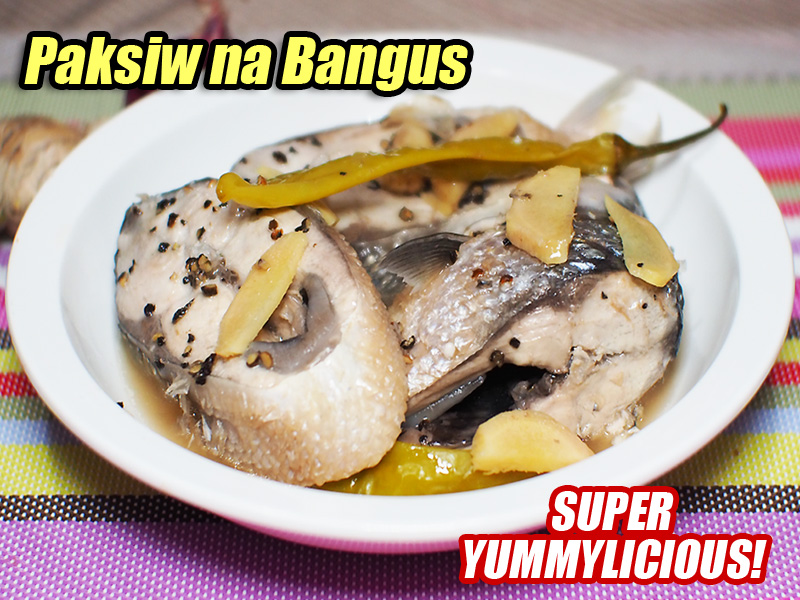

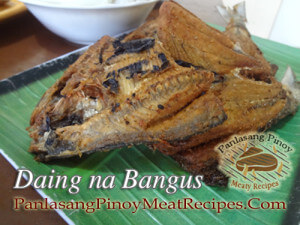
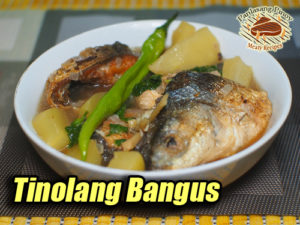
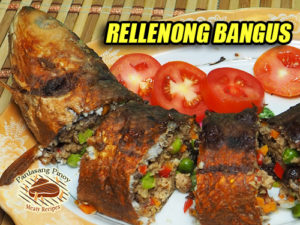
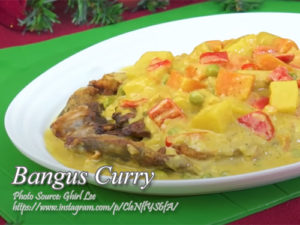
I just cooked this recipe. My husband found the 2 cups of vinegar too sour for his taste. So probably next time I will lessen the vinegar to 1 cup only. Thanks for sharing.
HI Lilian, thanks for the feedback.
I’m glad I found your paksiw na bangus recipe! I have 1 pair of fresh bangus from dagupan which we bought in a market.
Hi Kristina, as far as I know bangus from dagupan is the tastiest bangus. Good luck on your cooking and hoping you’ll enjoy the dish!